The ITA conferences have brought together luminaries from many fields and thousands of interested people from dozens of countries around the world. ITA has helped birth a global transpersonal community pointing towards a future where science and spirituality offer a shared vision returning humanity to a meaningful place in the cosmos.
The story of the ITA is told below by Stan Grof.
Origins
The Association of Transpersonal Psychology (ATP) was created in the late 1960s and held since its inception regular conferences in Asilomar, California. Later, several transpersonal conferences were held outside of California but still within the USA, including those held in Council Grove, Kansas. These started in 1969 by a small group of people (Walter Pahnke, John Lilly, Ken Godfrey, Helen Bonny, Elmer Green, Alyce Green, and Stanislav Grof). The Kansas conferences included some participants from abroad. As interest in the transpersonal movement grew, occasional international transpersonal conferences were held outside the San Francisco Bay Area and outside of the USA.
The first International Transpersonal Conference took place in 1972 in Bifrost, Iceland. It was organized by Geir Vihjamsson, a psychologist from Reykjavik, and Ingrid Vilhjamsson. A group of 58 participants represented psychologists, psychiatrists, theologists, comparative religionists, orientologists, mythologists, physiologists, physicists, chemists, music therapists, choreographers and dancers. Among the attendees were Joseph Campbell and Jean Campbell-Erdman, Huston Smith, Walter Houston Clark, Stan Grof, Joan Halifax, Paul Grof, Eva Grof, William Richards, Ilse Richards, Martha Crampton, Lawrence LeShan, Edgar Jackson, Roan Reid, Nicholas Herbert, Buryl Payne, Jean-George Henrotte, Lester Fehmi, and Icelandic mythologist Einar Palsson.
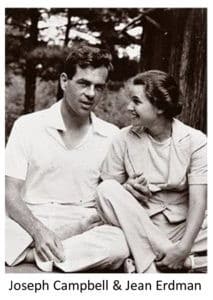
The Third International Transpersonal Conference
The Third International Transpersonal Conference was held in a school in Inari, Finland Lappland in 1976, on the Soviet border. The lectures were held in the gymnasium of the school building that hosted the event; it was vacation time and the classrooms were transformed into residential units. Among its participants were Mexican psychedelic psychiatric Salvador Roquet and Prince Peter of Denmark (son of the psychoanalyst Greek Princess Marie Bonaparte). Christina Grof participated for the first time. Prince Peter, who had lived for 20 years in Tibet presented a fascinating movie about the four Tibetan oracles or kutens, important figures in Tibetan religion, politics, prophecy, and healing
The first three conferences were held at the time of white nights in areas that lie beyond the polar circle. It is well-known that people who live in these far northern territories have a strikingly high incidence of psychic phenomena. We met many people who were precognitive, telepathic, and clairvoyant, and others who had a reputation as healers, or were successful dowsers. The atmosphere and energy in these conferences were quite remarkable; many participants experienced spontaneous non-ordinary states and had ESP experiences.
The Fourth International Transpersonal Conference was held in Belo Horizonte, Brazil, in 1977; it was organized by Pierre Weil and Leo Matos, born in Brazil and living in Denmark. The meeting introduced participants to the extraordinary spiritual life in Brazil, including the spiritist movement and the syncretistic rituals of Umbanda. During the final meeting of this conference, it was noted that these conferences had become very popular and well attended and several participants suggested that the tradition of the international transpersonal meetings should be formalized. It was suggested that the tradition should be formalized under an international association.
We decided we should create an international association of transpersonal psychology that would become a vehicle for future international meetings. The proposal to form such an organization was enthusiastically accepted by all present. When the question of the president of this organization came up, somebody mentioned my name and most of the hands went up. Against my better judgment – since I had always strongly disliked administration – I accepted the offer.
(Photo below is from the time of the founding of the organization at the Brazil conference.)
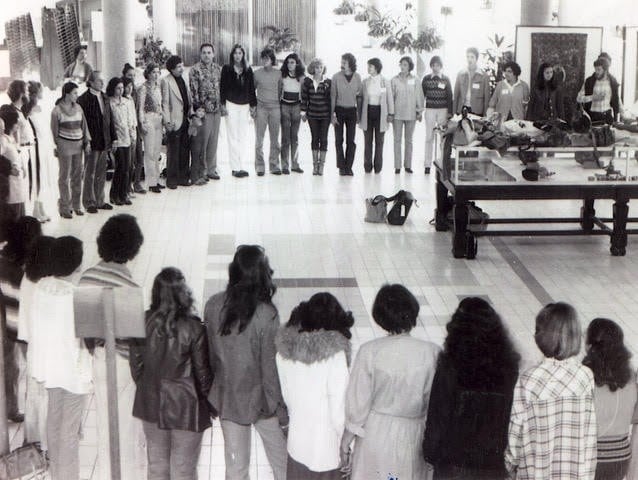
ITA was incorporated in California on February 27, 1980 as a scientific and educational corporation whose mission was to promote transpersonal education and scientific research, as well as to guarantee continuation of these international transpersonal conferences into the future.
The interdisciplinary nature of these international transpersonal conferences is exemplified by the fact that they featured not just prominent transpersonal psychologists but also many from other healing professions such as physicians, psychiatrists, and psychotherapists, as well as anthropologists, artists, biologists, educators, economists, mathematicians, mythologists, philosophers, physicists, politicians, spiritual teachers, and leaders from many other areas of human endeavor influenced by the transpersonal orientation.
The ITA Conferences
1. Danvers (Boston), Massachusets, USA, in 1979. My first task as the founding president of the ITA was to organize, jointly with Christina and with the help of Elias and Isa Amador, the next international conference. Elias and Isa Amador offered to be the organizers, while Stan and Christina Grof chose the topic, The Nature of Reality. The responsible parties decided to make an attempt to bring together all major representatives of the field and make it a “coming out” for ITA and the global transpersonal movement.
Among the presenters were Gregory Bateson, Frances Vaughan, Roger Walsh, Michael and Sandra Harner, Jack Kornfield, Jim Fadiman, Arthur Hastings, Ram Dass, Ralph Metzner, Ken Ring, Rick Tarnas, Karl Pribram, Jean Houston, Angeles Arrien, Al Huang, Mariavittoria Mangini (Hidden Mountain), Jim Hickman, Jane English, and many other pioneers in consciousness research. The Grofs were the program coordinators and a special guest of the conference was Swami Muktananda. Alex and Allyson Grey exhibited for the first time their Sacred Mirrors. (Photo to left is Psychic Energy System, one of the Greys’ Sacred Mirrors.)
We also used this occasion to present for the first time our concept of Spiritual Emergency. A special and unexpected guest of this conference was Swami Muktananda, the head of the Siddha Yoga lineage. We opened this session to the public and it was attended by more than 2,000 people, including Jerry Brown, who was at the time a US presidential candidate.
All the presenters invited to the conference agreed to present in return only for traveling expenses and accommodations, despite the fact that many were able to command significant fees for presenting elsewhere—and this then became the tradition that continued at all the subsequent ITA conferences.

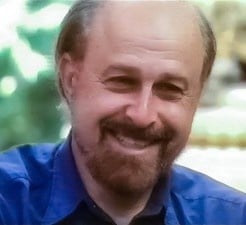
The meeting, held on Phillip Island near Melbourne, brought together people from all over Australia, who had interest in transpersonal subjects without knowing the term. The ITA was also able to connect with the native tradition of the hosting country; one of the keynote presenters was chief and activist of the Australian Aborigine Burnam Burnam. Participants included Frances Vaughan, Jim Fadiman, Al Huang, Stan Grof, Christina Grof, Jan-Anton Collins, Brian Cusker, David Bathgate, John Perry, Geshe Lhundrub Sopa, Trevor Tyson, Bessi Norbert, Friedemann Wieland, Ken Keyes, Jr, Penny Keyes, Nevill Drury, Mary Good, Dorothy Cameron, and Lionel Fifield.
The dinner lecture, “Monotheism: The Experiment That Has Failed” by Jim Fadiman (photo to right), was a great success in spite of the excellent wine offered by a participant and hundreds of balloons floating in the hall, brought to the conference Bruno Maier, Swiss producer of balloons. Jim started his talk with an unforgettable joke: ”I have always wanted to be a comedian, but changed my mind and became a psychologist; I did not want to work late nights and entertain drunks.”
Nature contributed greatly to the success of the conference; Phillip Island is a sanctuary of koala bears and has a giant penguin colony. The daily watching of penguins returning from the ocean at sunset to feed their young was an experience par excellence. This meeting started the transpersonal movement in Australia.
However, presentations included many prominent spiritual figures (Swami Muktananda, Mother Teresa, and the Parsee high priest Dastoor Minocher Homji, Jack Kornfield and Al Huang), famous scientists (Karl Pribram, Fritjof Capra, Rupert Sheldrake, Elmer and Alyce Green), and many psychologists and psychiatrists (Virginia Satir, Frances Vaughan, Leo Zeff, Cecil Burney, Rashna Imhasly). The ITA made the first connection with Karan Singh, former Maharaja of tashmir and Jammu, Aurobindo scholar and a brilliant speaker, who later participated in a number of ITA conferences.
There was also a cultural program featuring the then Indian rising star, dancer Alarmel Valli; Paul Horn playing a flute with an orca and dancing Al Huang; an evening of Jewish and transpersonal mysticism with Shlomo Carlebach; and Zalman Schachter, and a dzikr by Sheikh Muzaffer and the Halveti Jerrahi dervishes. Over seven hundred people participated in this conference. A cultural sensation was that, in the dzikr of the Halveti Jerrahi, dervishes invited women to participate at the end of the dance for the first time. After the meeting, Baba Muktananda invited all guests to visit his ashram in Ganeshpuri and enjoy a traditional Indian feast (bandara). At the end of the Bombay conference, I passed the ITA presidency onto Cecil Burney, a Jungian psychologist.
The Dalai Lama was able to come this time and among the special guests were Frederic Leboyer, Elizabeth Kübler-Ross, Sri Chakravarti, Gopi Krishna, Karan Singh, and Marie-Louise von Franz. (Photo to right, Stan and Christina Grof meeting Dalai Lama at Davos conference).
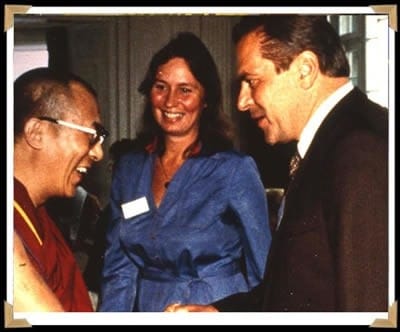
Encouraged by this stellar alliance and success by the ITA Conference in Davos, Burney decided to rent the Kyoto International Conference Center at the cost of $11,000 a day. This was based on the fact that he expected to get 1,500 paying participants. However, he did not realize that he had to sell not only transpersonal psychology (unknown at the time in Japan) but also the concept of a conference where the Japanese needed to take a week off from their work to attend a meeting unrelated to their job.
Among the guests were prominent Japanese spiritual teachers and philosophers (e.g., Nikitani Roshi, Koshiro Tamiki (scholar of Buddhist philosophy), African Zulu shaman and anthropologist Credo Mutwa, Rusty Schweickart, astronaut pilot of the lunar module in the Apollo 9 Mission, Kitarō artist, musician and producer, Shin and Etsuko Yoshifuku, Hayao Kawai (Japan Jungian scholar and therapist, Kyoto University), Kazuhiko Higuchi (leading Japanese Jungian also from Kyoto University), Karan Singh, Christina Grof, Frances Vaughan, Bob Schwartz, President of Tarrytown House Executive Conference Center, Rashna Imhasly, Dora Kalff, Elisabeth Kubler-Ross, William Irwin Thompson, and Dom Hélder Câmara, Brazilian Archbishop of Olinda and Recife.
The conference was extraordinary, particularly its cultural program (imperial drama played before only in the Japanese Royal Court, a Shinto fire ceremony and a flute performance by a group of monks who live with their heads covered by special baskets).
A collection in Japanese of transcribed lectures from the Kyoto ITA conference co-edited by Shin Yoshifuku and Dr. Hayao Kawai was published in 1986, under the title: Uchu Ishikie no Sekkin (Approaching a Universal Consciousness). The book features 11 of the speakers from the conference: 1. Russell Schweikart, 2. Francisco Varela, 3. John Weir Perry, 4. Kazuhiko Higuchi, 5. Dora Kalff, 6. Dom Hélder Câmara, 7.Kazuhiko Higuchi, 8. Vusumazulu Credo Mutwa. 9.Elisabeth Kubler-Ross, 9. Stanislav Grof, 10.Koshiro Tamiki 11. William Irwin Thompson.
Unfortunately, even though 700 people attended the conference, which was quite impressive under the circumstances, the conference lost over $50,000 and sent the ITA into bankruptcy.
Some fortuitous circumstances helped us to resurrect the ITA. After difficulties with Heldref Publications, the publisher of the Re-Vision Journal, Ken Wilber resigned as editor of this journal and Stan Grof was invited to take his place. Heldref had sent one of its staff members, Stuart d’Eggnuff, as observer to the Kyoto conference. After this observer gave an enthusiastic report, Heldref offered the ITA a loan of $70,000 as seed money for another international transpersonal conference and ITA was resurrected. The new ITA had its home in Washington, D.C., and I once again became its president.
Trying to avoid the Kyoto fiasco, Christina and I decided to hold the meeting in Santa Rosa, CA, close to the San Francisco Bay Area, the home of many pioneers of the transpersonal movement, who could thus participate without incurring any significant traveling expenses. The participation of this core group made the conference interesting not only for participants, but also for additional presenters attracted by stellar presenters on the program. The theme of this international transpersonal conference was The Transpersonal Vision: Past, Present, and Future. The coordinator was John McKenzie, helped by Tav and Cary Sparks.
Here we offered for the first time as pre-conference workshop the experience of holotropic breathwork; it had 360 participants, the largest group we had ever done. (I described the errors and pitfalls of the workshop in the book Holotropic Breathwork.) This conference was a great financial success. Among the special highlights of the conference was the participation of Albert Hofmann, the discoverer of LSD, and evenings with Mickey Hart of the Grateful Dead (photo to right) and Michael Vetter player of a percussion instruments and overtone singer.
Presenters included Roger Walsh, Frances Vaughan, angeles Arrien, Rick Tarnas, Jane English, Jack Kornfield, and Wes Nisker, We were also able to invite as guests of honor Vassily and Zhanna Nalimov, leading proponents of transpersonal psychology in Russia. The ITA gave a special award to Dora Kalff, the mother of sandplay therapy, for her contributions to the transpersonal field.
The conference was a great financial success, with a profit over $130,000. This allowed us not only to repay Heldref’s loan of $70,0000 but also to have seed money for the next ITA conference.

Our interest in alcoholism and addiction for personal reasons inspired the next two ITA meetings – one in 1990 on the West Coast of the USA in Eugene, Oregon, and the second in 1991 on the East Coast in Atlanta, Georgia. They both carried the same title – Mystical Quest, Attachment, and Addiction and were inspired by Christina’s idea – to bring together people involved in the addictions field, who recognize the vital role spirituality plays in the development and treatment of alcoholism and other addictions, and pioneers of transpersonal psychology, who were developing a scientifically acceptable theoretical framework for spirituality.
8. Atlanta, USA, in 1991. The East Coast Conference brought together many like-minded luminaries on the same theme, Mystical Quest, Attachment, and Addiction. Due to the success on the West Coast, presenters returned from the addiction field (John Bradshaw, the Sierra Tucson staff) and were joined by Linda Leonard, Frances Vaughan, Roger Walsh, Cathy Coleman and transpersonal psychiatrists, psychologists, and spiritual teachers.
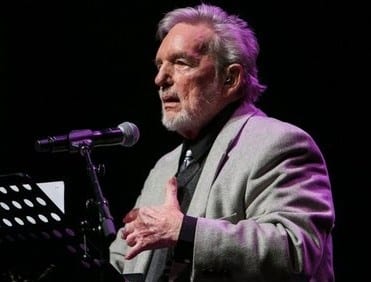
The theme was Science, Spirituality, and the Global Crisis: Toward a World with a Future. The hall with a capacity of 1600 people was sold out and the registration for Westerners had to be stopped a month before the conference, while hundreds of interested Czechs could not be admitted to the conference due to space limitations. The participants came from 36 different countries and the pre-conference holotropic breathwork had 350 participants.
This conference was held under the auspices of the Czech president Václav Havel, a statesman deeply interested in the transpersonal perspective. To our great disappointment, president Havel was not able to personally welcome the participants and give the opening speech, since he had to attend an emergency meeting of the Parliament focusing on the imminent break-up of Czechoslovakia into two separate countries.
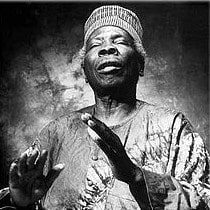
The Prague ITA conference, which was the first opportunity for Eastern and Western representatives of the transpersonal movement to meet and exchange information, was a great success. The tai-chi and sword master Chungliang Al Huang danced accompanied by musical virtuoso Jiri Stivin. The highlight of the program was the performance of Babatunde Olatunji, a Yoruba singer, with ten African drummers and dancers. (Photo to right). After receiving an enthusiastic standing ovation for their stunning act, the performers decided not to recede behind the curtain, but continued dancing through the center of the hall and out through the front entrance of the building into the streets of Prague.
After forty years of Communist oppression, when even the twist was considered to be unacceptable Bourgeois perverse entertainment, this conference was held in Prague and it was enormously successful. For me, this meeting had a special significance, since it made it possible for me to bring transpersonal psychology to my native country where I started my professional career and did my early research.
(Photo below is Stan Grof with David Bohm.)
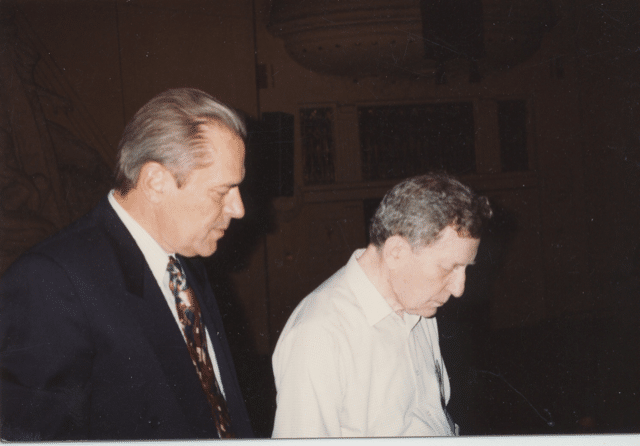
11. Killarney, Ireland, in 1994. After the death of Patricia Demetrios-Ellard, I resumed the ITA presidency for the third time at the request of my California friends. The next international transpersonal conference was to some extent a continuation of the Santa Clara meeting, an application of transpersonal psychology to urgent problems in other areas. The conference theme was Spirituality, Ecology, and Native Wisdom, and its coordinator was Ralph Metzner, who had a profound interest in ecology and in the world peace movement.
Presenters included Arne Naes, Angeles Arrien, Jane Middelton-Moz, Roger Walsh, Frances Vaughan, Jack Kornfield, Jacob von von Uexkull, Angeles Arrien, Jean Shinoda Bolen, Thomas Berry, Michael and Justine Toms, David Whyte, Andrew Weil, Terence McKenna, Rupert Sheldrake, Jill Purce, Frances Vaughan, Roger Walsh, Stan Grof, Christina Grof, Jon Mohawk, David Peat, Matthew Fox, Jonn Nelson, David Lukoff, Ram Dass, Al Chungliang Huang, Robert Greenway, Jean Achterberg, Ralph Metzner, Will Keepin, Stephen and Robin Larsen, Georgia Kelly, Peter Russell, Satish Kumar, Norbert Mayer, Charles Pinkson, Christian Raetsch, John Mack, Elisabet Sathouris, Sulak Sivaratsa.
Cathy Coleman organized a special program for ITA children at the conference. Lauren Artress offered participants meditation in her Labyrinth, copy of the nave of Chartres Cathedral.
At this conference, the ITA Award was given to Arne Naes, Swedish environmentalist and founder of deep ecology.
12. Manaus, Brazil, 1996. This ITA conference was again organized by Stan and Christina Grof. The theme was Technologies of the Sacred: Ancient, Aboriginal, and Modern. The gathering included shamans from Peru, Ecuador, and Brazil; representatives of the Santo Daime tradition; and members of Union de Vegetal. The cultural program included Capoeira, School of Samba, Santo Daime chants, and many others. The highlight of the conference was a concert in the famous Manaus opera house featuring Jai Uttal, Geoff Gordon, Chungliang Al Huang, and others. Over 900 people participated at the conference.
Participants included: Angeles Arrien, Frances Vaughan, Richard Tarnas, Charles Grob, Gary Bravo, Lauren Artress, Stanley Krippner, Arnold and Amy Mindell, Jane Middleton-Moz, Robert Jesse, Rick Strassman, Stephen and Robin Larsen, Charles Grob, Amit Goswami, Eduard Luna, Stan Grof, Christina Grof, Michael Grosso, Paul Grof, John Mack, Doucey Douek, Alex Polari de Alverga, Wes Nisker, Pierre Weil, Bo Wikstrom, Cathy Coleman, Ralph Metzner, Sean Kelly, Massimo Rosseli, Sandra Harner, Chris Bache, Donna Dryer, Rich Yensen, Roger Woolger, Paolo Rzezinski, Carlos Martinez Bouquet, Orlando Villas-Boas, Maria Lucia Sauer- Holloman. Vincente Galváo Parisi, and Linda and Charlie Bloom. Shamanic presentations included Vusumazulu Credo Mutwa, The Spirit of Africa; and Manuel Q’espi, The Ancient Inka Initiation of Hatun Karpay.
During the conference, the Hollywood film Anaconda was being shot nearby with Jon Voight, Jennifer Lopez and Eric Stoltz. Jon Voight offered to give a lecture at our conference on importance of ecology.
Post-Conference Workshop: Journey to the village of Céu do Mapiá, center of Santo Daime.
13. Palm Springs, CA, USA, 2004. Inspired by the 100th anniversary of the birth of Joseph Campbell, the theme of the 2004 conference was Mythic Imagination & Modern Society: The Re-Enchantment of the World. Stan and Christina organized the conference and the coordinator was Robert Duchmann. Among the special guests were John Cleese, Lorin Hollander (playing Mussorgsky’s Pictures at an Exhibition), and Indian classical dancers Vishnu Tattva Dass and Barbara Framm. The presenters included Rick Tarnas, Chungliang Al Huang, Michael and Sandra Harner, Michael and Annie Mithoefer, Peter Russell, Huston Smith, Jenny Wade, John Mack, Roger Walsh, Jack Kornfield, Brother David Steindl-Rast, Francis Lu, Albrecht Mahr, Francisco Moreno, Bernard Lietaer, Robert McDermott, Wes Nisker, Marilyn Schlitz , Michael Meade, Paul Grof, Ralph Metzner, John Buchanan, Rick Doblin, Shairy Jose Quimbo, Charles Grob, Sean Kelly, Angeles Arrien, Charlene Spretnak, Frances Vaughan, David Lukoff, Francis Lu, Stephen and Robin Larsen.
Stan and Christina decided this was their last ITA Conference given their many other commitments.
The new ITA began with Harris Friedman serving as its President, David Lukoff as Vice President, and Glen Hartelius as Secretary and Treasurer. The new board met for the first time at the EUROTAS 2010 conference in Moscow (see below). Les Lancaster served as a president of ITA between 2009 and 2017. Zana Marovic is the current president.
A pre-conference workshop offered the opportunity to experience holotropic breathwork directed by Stan and Christina Grof with the assistance of an international team of over 45 facilitators. With approximately 460 participants, this gathering represented the largest holotropic breathwork workshop in the world.
There was also a very successful pre-conference workshop by Alex and Allyson Grey on Visionary Art. The final artistic concert of the Conference Anima Mundi manifested the treasure of world transpersonal art, singing and ritual performance.
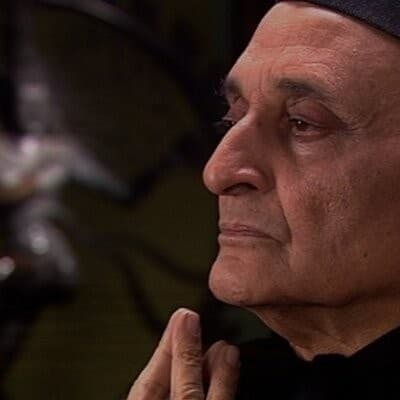
With hundreds of enthusiastic participants from dozens of countries, the 2017 conference took place exactly 25 years after the historical and very successful first international conference in Prague. The call to participation in the conference was phrased as follows:
The overall state of human civilization and its reign over the Earth is no longer sustainable. When we take into consideration the health of the planet, society and modern man, we have to conclude that we are in crisis. There is a rising number of scientists and specialists who are warning us not only about specific challenges in culture, technology, religion, politics, economics and ecology, but also about their various interactions and the unpredictability of their acceleration and multiplication. However, each crisis may prove to be the trigger of a radical re-evaluation; opening up new possibilities of change.
A pre-conference workshop offered the opportunity to experience holotropic breathwork directed by Stan and Christina Grof with the assistance of an international team of over 45 facilitators. With approximately 460 participants, this gathering represented the largest holotropic breathwork workshop in the world.
There was also a very successful pre-conference workshop by Alex and Allyson Grey on Visionary Art. The final artistic concert of the Conference Anima Mundi manifested the treasure of world transpersonal art, singing and ritual performance.
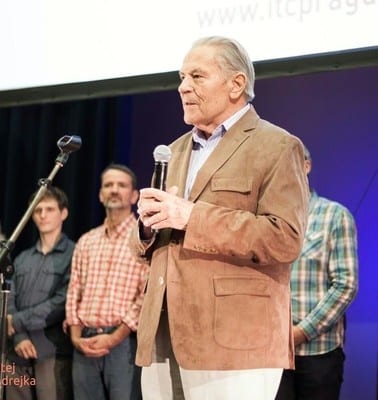
Presenters in the ITA Conferences
Many of the presenters at ITA Conferences have been outstanding representatives of various fields. These include luminaries from psychology and psychiatry, other sciences, spiritual life, art and cultural life, and politics, some of whom are listed as follows:
Psychology and psychiatry—Frances Vaughan, Roger Walsh, Sandra Harner, June Singer, John Perry, James Fadiman, Arthur Hastings, R. D. Laing, Virginia Satir, Dora Kalff, Elisabeth Kübler-Ross, Marie-Louise von Franz, Jean Shinoda Bolen, Claudio Naranjo, Ken Pelletier, Ralph Metzner, Angeles Arrien, Christopher Bache, Paul Grof, Stanislav Grof, Christina Grof, Charles Tart, Steven Larsen, Robin Larsen, Kenneth Ring, Arthur Hastings, Judith Cornell, Richard Tarnas, Jean Houston, Steve Aizenstat, Arnold Mindell, Amy Mindell, Roger Woolger, Gilda Moura, Raymond Moody, John Bradshaw, Pierre Weil, Marion Woodman, Massimo Rosselli, Ann Armstrong, Paulo Rzezinski, Linda Leonard, Jane Middelton-Moz, Rokelle Lerner, Charles Whitfield, John Mack, Robert Jay Lifton, Robert McDermott, Stanley Krippner, Andrew Weil, Seymour Boorstein, Dean Shapiro, Charlene Spretnak, Marilyn Schlitz, Ingo Jahrsetz, Hércoles Jaci, John Beebe, Harris Friedman, Jenny Wade, Michael Mithoefer, Charles Grob, Richard Yensen, Vladimir Maykov, Donna Dryer, Dennis Slattery, Rick Strassman, Phillippe Bandeira de Melo, Michael Grosso, David Ulansey, Don Juan Nuñez del Prado, and Roberto Baruzzi;
Other sciences—David Bohm, Karl Pribram, Fritjof Capra, Rupert Sheldrake, Fred Alan Wolf, Ervin Laszlo, Elizabeth Kübler-Ross, Willis Harman, Albert Hofmann, Orlando Villas-Boas, Vasily Nalimov, Ilya Prigogine, Lee Sannella, Igor Charkovsky, Elmer and Alyce Green, Michael Harner, Peter Russell, Richard Katz, Russell Targ, Arthur Young, Jean Achterberg, Duane Elgin, Ivan Havel, Zdenek Neubauer, Carl Simonton, Frederic Leboyer, Peter Schwartz, Bernard Lietaer, Brian McCusker, Terence McKenna, Brian Swimme, Amit Goswami, Igor Charkovsky, Luiz Augusto de Queiroz, Michel Odent, and Rachel Naomi Remen;
Spiritual teachers–Mother Teresa, His Holiness the Dalai Lama, Swami Muktananda, Brother David Steindl-Rast, Pir Vilayat Khan, Sheikh Muzaffer and the Halveti-Jerahi dervishes, Sogyal Rinpoche, Ram Dass, Chungliang Al Huang, Matthew Fox, Jack Kornfield, Wes Nisker, Nishitani Roshi, Gopi Krishna, Thomas Banyacya, Don Manuel Q’espi, Andrew Harvey, Lauren Artress, Alex Polari de Alverga, Huston Smith, Cecil Williams, Shairy Jose Quimbo, Brooke Medicine Eagle, Zalman Schachter.
Artsts and cultural life: Olotunji Babatunde, and Shlomo Carlebach—John Cleese, Alarmel Vali, Paul Horn, Mickey Hart, Steven Halpern, David Darling, Randall Bramblett, Michael Vetter, Gabrielle Roth, Nina Wise, Jiri Stivín, Patricia Ellsberg, Alex Grey, Silvia Nakkach, Lorin Hollander, Tara Tupper, Nina Simons, Jon Voight, Jai Uttal, Geoffrey Gordon, Russell Walder, Vishnu Tattva Das, Barbara Framm, Susan Griffin, Robert Bly, Robert Schwartz, Gloria Steinem, Isabel Allende, Jill Purce, Georgia Kelly, Steve Roach, Rusty Schweickart, Raizes Caboclas Orchestra, Mar Azul Capoeira group, and Lost at Last; and politics—Karan Singh, Jerry Brown, John Vasconcellos, Jim Garrison, Burnum Burnum, and Sulak Sivaraksa.
Many recordings from ITA conferences may be purchased from Conference Recording Service, Inc.
